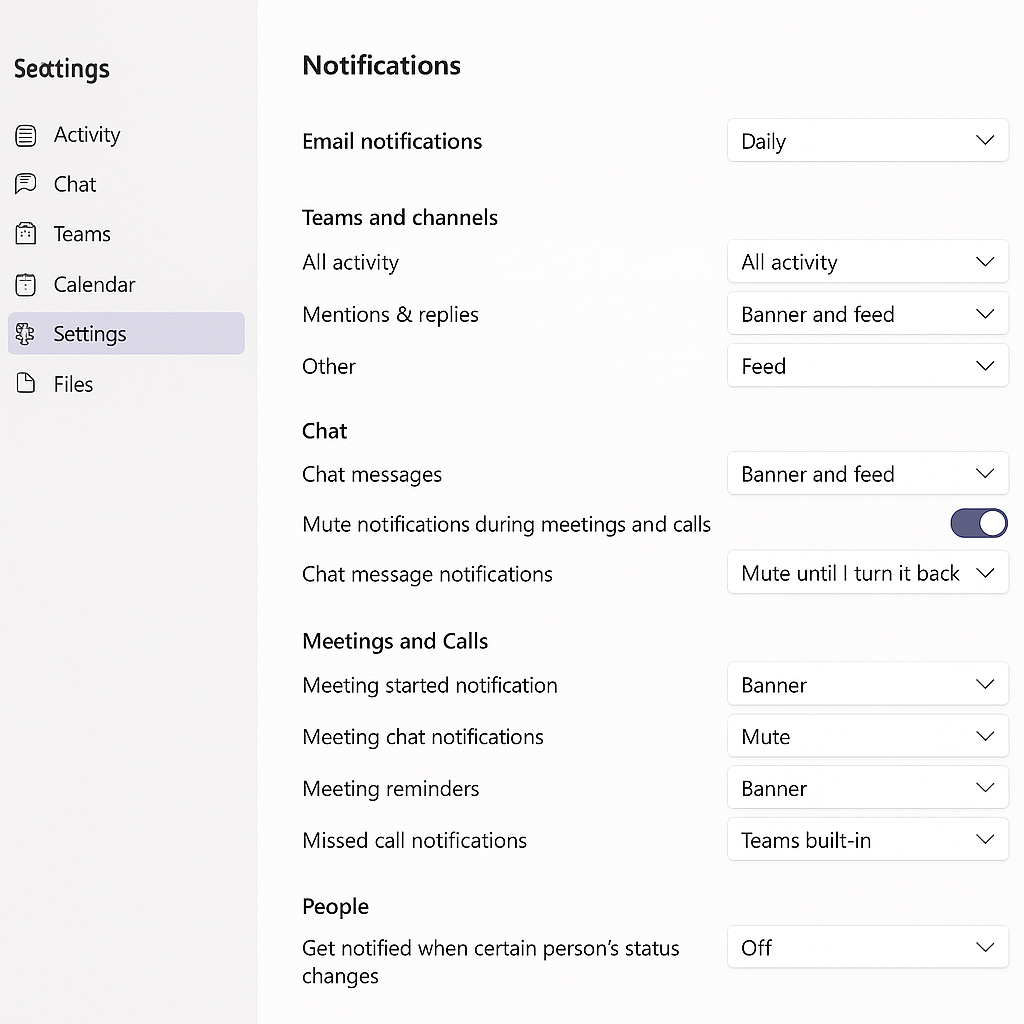Struggling with Teams notification overload?
“I’m getting bombarded with Teams notifications all day. Some are important, but most just break my concentration. How can I customize which notifications I receive and when I receive them? I need to stay informed about critical communications while minimizing distractions.”
Managing Teams notifications for productivity
Notification overload is a significant productivity killer in today’s digital workplace. Studies show that each interruption can cost up to 23 minutes of focused work time. Microsoft Teams offers comprehensive notification management options that let you control what deserves your immediate attention. Properly configured notifications ensure you stay connected to important conversations without being constantly distracted by less urgent matters.
Setting up your personalized Teams notifications
This tutorial will guide you through configuring your Microsoft Teams notification settings to match your work style. We’ll cover managing channel notifications, controlling status alerts, and setting up quiet hours. You’ll need a Microsoft Teams account with the latest desktop or mobile app version. These settings can be adjusted on any device, though some advanced options may only be available on desktop clients.

Customizing your Teams notification preferences
Access your notification settings in Microsoft Teams
- Open Microsoft Teams and click on your profile picture in the top-right corner to reveal a dropdown menu with various account options.
- Select “Settings” from the dropdown menu to open your personal Teams settings panel with multiple configuration categories.
- In the Settings panel, click on “Notifications” in the left sidebar to access all notification-related options for channels, chats, and meetings.
- Take a moment to review the default notification settings before making any changes to understand your current configuration.
- Note that some organization-wide notification policies might be preset by your IT administrator, limiting certain customization options.
Configure channel and team notifications effectively
- Scroll to the “Teams and channels” section to manage how you receive alerts from different conversation types within your teams.
- Choose between “Banner and email,” “Only show in feed,” or “Off” for each notification category based on your communication priorities.
- Consider setting mentions of your name or team to “Banner and email” to ensure you never miss direct requests requiring your attention.
- For less critical channels, select “Only show in feed” to review updates at your convenience without immediate interruptions.
- Use the “Custom” option for your most important teams to create granular notification rules based on specific keywords or conversation types.
Set up quiet hours to suppress Teams notifications
- Locate the “Quiet hours” section at the bottom of the notification settings page to establish work-life boundaries.
- Toggle on “Quiet hours” to automatically silence notifications during your specified non-working hours to maintain work-life balance.
- Set your preferred start and end times for quiet hours, considering your typical workday schedule and time zone.
- Enable “Quiet days” to extend notification suppression to specific days of the week, such as weekends or designated focus days.
- Remember that urgent messages from designated priority contacts can still break through quiet hours if you enable this exception.
Manage status notifications in Teams
- Navigate to the “Status” section in notification settings to control how Teams displays your availability to colleagues.
- Choose whether to allow Teams to automatically update your status based on calendar events and activity to maintain accurate presence information.
- Decide if you want Teams to show when you’re “In a call” or “In a meeting” to help colleagues understand your availability.
- Configure whether your status should automatically change to “Away” after periods of inactivity to accurately reflect your presence.
- Consider enabling “Do not disturb when presenting” to automatically suppress notifications during presentations or screen sharing sessions.
Common Teams notification issues
- If you’re still receiving notifications despite enabling quiet hours, check if you have priority access enabled for certain contacts who can bypass these settings.
- When notifications appear inconsistently across devices, verify that you’re signed into the same Teams account on all devices and that notification settings are synchronized.
- For missing notifications on mobile devices, check your phone’s system notification settings to ensure Microsoft Teams has the necessary permissions to display alerts.
- If channel notifications aren’t appearing as expected, confirm that you haven’t muted the specific channel by right-clicking the channel name and checking for the “Unmute” option.
- When experiencing delayed notifications, try signing out of Teams completely, clearing the application cache, and signing back in to reset the notification system.
Pro tip: Create a custom notification schedule that matches your focus time by combining quiet hours with channel-specific notification settings for an optimal balance between connectivity and concentration.
